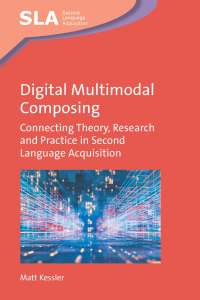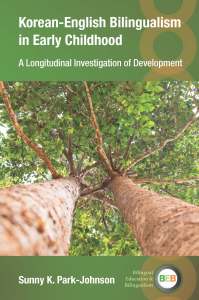We recently published Centering Multilingual Learners and Countering Raciolinguistic Ideologies in Teacher Education by Jeff Bale, Shakina Rajendram, Katie Brubacher, Mama Adobea Nii Owoo, Jennifer Burton, Wales Wong, Yiran Zhang, Elizabeth Jean Larson, Antoinette Gagné and Julie Kerekes. In this post Jeff explains how the book contributes to the field of teacher education and multilingualism.
“I feel like you’re judging…I don’t know if judging is the right word, but you’re marking somebody on the way they speak. Then, if you hear another person in a different situation, who’s not an English language learner, you might find the same things…[but] then they’re not marked or judged differently…It feels like you have to jump like an extra hoop, like through an extra hoop, you know, constantly.”
 Luciana, a multilingual future teacher of math for Grades 4-10, expressed these concerns about assessing English learners in an interview with our research team. Luciana was referring to the English-language assessment tool used in Ontario, and the activities she had been asked to complete with this tool in a required seminar called “Supporting English Language Learners” in the teacher-education program at OISE, University of Toronto. Throughout the conversation, Luciana reflected on her own experiences of constantly having to prove her proficiency in English (as a student in Mexico, where she grew up; to attend university; to get permanent residency in Canada). These experiences led Luciana to question the purpose of assessing English learners, whether it had anything to do with actual language practices, or if the goal were rather to mark certain learners, to make them “jump through an extra hoop, you know, constantly.”
Luciana, a multilingual future teacher of math for Grades 4-10, expressed these concerns about assessing English learners in an interview with our research team. Luciana was referring to the English-language assessment tool used in Ontario, and the activities she had been asked to complete with this tool in a required seminar called “Supporting English Language Learners” in the teacher-education program at OISE, University of Toronto. Throughout the conversation, Luciana reflected on her own experiences of constantly having to prove her proficiency in English (as a student in Mexico, where she grew up; to attend university; to get permanent residency in Canada). These experiences led Luciana to question the purpose of assessing English learners, whether it had anything to do with actual language practices, or if the goal were rather to mark certain learners, to make them “jump through an extra hoop, you know, constantly.”
Luciana’s concerns provide powerful examples of what Daniels and Varghese (2019) theorized as white institutional listening, namely how teacher-education programs normalize the raciolinguistic ideologies (Flores & Rosa, 2015; Rosa & Flores, 2017) about Whiteness and standardized English that dominate in Canadian schools. In our book, we analyze how teacher candidates – especially those like Luciana who speak languages racialized in Canada – make sense of new knowledge about supporting multilingual learners in relation to this racial and linguistic ordering. We traced the dynamic shifts in thinking and practice as participants drew on their personal, professional and academic experiences to interpret what it means to work with multilingual students in the classroom.
Our book makes three important contributions to the growing scholarship on teacher education and multilingualism. The first is its analytical scope. At times, we zoom in on interviews with teacher candidates or the major assignments (e.g. lesson plans) they created for the required seminar mentioned earlier. We also provide close analysis of their learning based on Me Map videos we co-created with multilingual youth, in which youth told us about themselves, their friends and family, their ambitions in school, and their languages and cultures. Other times, we consider the 500+ responses we received from teacher candidates in our program on a pedagogical content-knowledge test about supporting multilingual learners. Complementing this broader perspective are interviews with ESL teachers and teacher-leaders, as well as teacher educators in Ontario’s other pre-service programs. Finally, we situate these various levels of analysis within a reading of the policies that govern teacher education in this province. The breadth of this research design allowed us to identify clear connections between different levels of policy appropriation: the policies themselves, teacher-education curriculum, course design, and the lived experiences of multilingual youth, teacher candidates, and teacher educators.
Second, our book identifies the siloed divisions in scholarship of language, race/racism and teacher education. Few applied-linguistic studies of multilingualism and teacher education frame their inquiry in relation to race/racism or (de-)colonization, although this is starting to change. Similarly, critical anti-racist and decolonial scholarship on teacher education only rarely considers multilingualism or language education. In the book, we reflect on how these disciplinary divisions impacted our own study. We describe the shifts in our own thinking and offer them as an example of teacher-education research that takes the relationship between language and race/racism seriously.
Finally, our book makes an important intervention about the ethics of publishing research. There is growing interest in the ethics of doing applied-linguistic research (e.g. de Costa 2016; Pinter & Kuchah, 2021). But how scholars disseminate our work in ethical ways is not often considered. Ours was a complicated study. We were lucky to have a talented group of doctoral-student researchers on the project for almost its entirety. Far from just ‘carrying out’ the work that I as PI, or Antoinette and Julie as co-PIs had conceived, the entire team was responsible for designing, conducting and analyzing the data. The only ethical choice for us was to honour this collective work and share in the writing of this book. It made the writing process a bit more complicated with 10 co-authors! But we think the result is more robust and interesting. We hope you agree.
For more information about this book please see our website.
If you found this interesting, you might also like Antisocial Language Teaching by JPB Gerald.
 Heritage Languages in the Digital Age: The Case of Autochthonous Minority Languages in Western Europe explores the intricate relationship between technology, language policy and cultural identity, presenting case studies of digital communication in smaller languages such as Breton, Gaelic, Faroese, Frisian, Lombard, Low German and Welsh. The book’s central focus is on minority languages which are facing a declining number of speakers and a loss of communicative domains in an increasingly globalising world.
Heritage Languages in the Digital Age: The Case of Autochthonous Minority Languages in Western Europe explores the intricate relationship between technology, language policy and cultural identity, presenting case studies of digital communication in smaller languages such as Breton, Gaelic, Faroese, Frisian, Lombard, Low German and Welsh. The book’s central focus is on minority languages which are facing a declining number of speakers and a loss of communicative domains in an increasingly globalising world.







